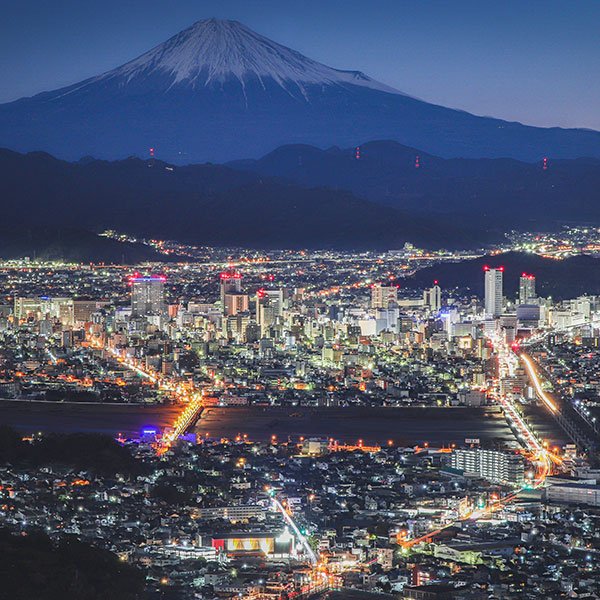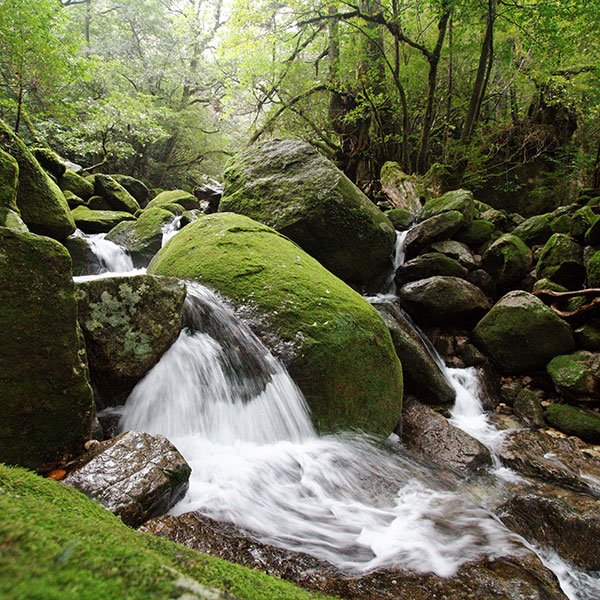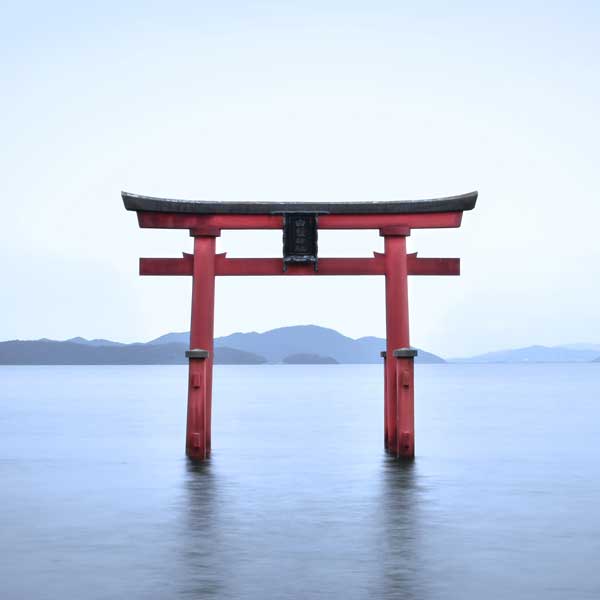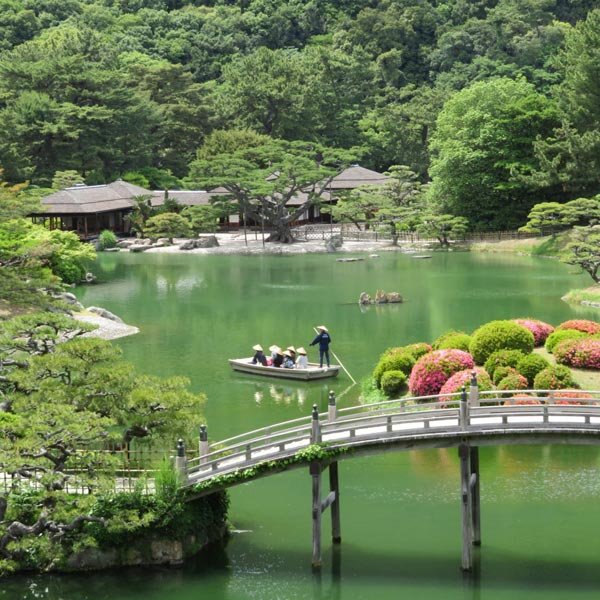15 Best Places to Enjoy the Japanese Countryside
by Lucy Dayman | TRAVEL
© Kentagon / Creative Commons, Lake Ashi
To say Japan’s cities have plenty to offer is an understatement. You could spend an entire decade living in Tokyo and not run out of things to do. However, if you overlook the Japanese countryside, you’ll be doing yourself a huge disservice.
The places we’ve selected for this list were collected from all over the map; we’ve chosen them because they represent a special part of the nation’s personality. From the pristine beaches of Okinawa and the artistic attractions of Hakone, to the local, small-town charm of Chino, this list is just a sampling of what Japan has to offer if you’re willing to go beyond the city limits. Perfect for the return visitor, or those who want to explore the history and diversity of this incredible country, here are 15 Japan countryside destinations you will want to add to your itinerary.
1. Kamikochi
Tucked in the Hida Mountains of Nagano, Kamikochi is highland Japan at its most postcard perfect (see map). While city-dwellers start to buckle under rising temperatures, there are often still sprinkles of snow on Kamikochi’s mountain peaks, which makes this one of Japan’s great places to visit in summer. To maintain its pristine condition, you can only access the area by a public bus service and taxi, which depart about 20 minutes away from the area’s main entrance (how to get to Kamikochi). Don’t let that put you off, it’s a minor inconvenience in comparison to what you’re about to witness. The area is perfect for camping: pitch your tent at the bottom of the snowy mountain, look out over the river and let the rest of the world fade away.
2. Hakone
© Kentagon / Creative Commons, Lake Ashi
Hakone is an incredibly popular day and weekend trip from Tokyo, and for good reason. Only 50 miles (85km) from the capital (see map), the famous Japanese countryside town feels worlds away from the hectic energy of the city with its wide variety of onsen, tranquil Lake Ashinoko and most importantly its stunning views of Mt. Fuji. The Hakone Open Air Museum is also a must-not-miss attraction. Ideal all year round - as long as it’s not raining - the museum is home to an impressive collection of abstract sculptures crafted by local and international artists. If that wasn’t enough, the museum boasts a hall dedicated to the works of Pablo Picasso.
3. Mount Aso, Kumamoto
© Travelbusy.com, Mount Aso
In 2016, the town of Kumamoto made headlines around the globe after a magnitude 7.0 earthquake sent ripples of destruction across the city and the neighboring area. However, a few years down the track the town has bounced back tremendously and is more than eager to welcome returning guests. In the city center sits the remains of Kumamoto Castle which is being rebuilt from its remains piece-by-piece. But look out further, and you’ll find the area’s most exciting attraction, Mt Aso, a still active volcano, constantly billowing clouds of smoke from its rugged, moon-like crater (see map). You can climb the mountain, but be warned, if the volcano is too active there made be barriers in place, so it’s best to check beforehand to avoid disappointment.
While you’re in Kyushu, ceramics fans should take a trip to Amari: find out more in 6 Best Japanese Ceramic Towns You Should Visit!
4. Yakushima
Yakushima in Kagoshima Prefecture (see map) is so beautiful that it’s long been touted as the inspiration behind Hayao Miyazaki Studio Ghibli anime masterpiece Princess Mononoke. A favorite spot for tourists, domestic ones especially, it’s a great place for shinrin-yoku (森林浴), known in English as the act of forest bathing. The best way to immerse yourself in the beauty of Yakushima’s surroundings is by taking a waterfall-backdropped trek to Mt Miyanoura, via the Arakawa trail. Stop off to admire the Jomon Sugi, an ancient UNESCO recognized-tree that’s estimated to be as much as 7200 years old. On a rainy day (and there will be a lot of those), take a drive instead. You can encircle the island in a few hours. But drive slowly, as you are almost guaranteed to come across families of macques or adorable sika deer along the road.
5. Shiretoko
© JNTO, Shiretoko Peninsula
Perched on the easternmost portion of the Japanese island of Hokkaido, the Shiretoko Peninsula is one of the most meticulously maintained national parks, and the most unspoilt of all of Japan’s countryside. There’s a good reason for this: Shiretoko has the highest concentration of bears in the entire world, so it’s not the best place for a casual stroll! However, at the the Five Lakes Visitor Center (see map) you can experience the pristine wilderness in a safe environment. Great for animal lovers and those who want to get the know the more wild locals. If you’re there in winter head to the Sea of Okhotsk’s coastline to witness the natural phenomena of drift ice, carried along by currents flowing from neighboring Russia.
6. Kabira Bay, Ishigaki
© Kiyotaka Kitajima, Kabira Bay
For those unfamiliar with Japan, the first impressions that spring to mind are often neon-lit metropolises or rugged pine-covered mountains. But remember that Japan is an archipelago of 6,852 separate islands, and you’ll start to picture the unlimited potential for beaches! Going as far south as you can some 1200 miles (2000km) from Tokyo is the tropical jewel of Ishigaki (see map). The pearl-growing cove of Kabira Bay is widely recognized as one of the most beautiful beaches on the island. Clear aqua blue and pristine sand, it could quite possibly be one of the most beautiful beaches in the world! Take a glass bottom boat out to view the coral reef up close. You can’t actually swim in Kabira bay, but the whole island is surrounded by unspoilt and often empty beaches, with great opportunities for snorkeling.
Once you check out the glorious photography of Kiyotaka Kitajima, you will not be able to resist a visit!
7. Mount Daisen, Tottori
© Chugoku x Shikoku x Tokyo, Mount Daisen
The prefecture of Tottori is the least-populated in all of Japan, which only adds to the area’s rural charm. The most defining feature of the Tottori countryside is Mount Daisen, the overbearing local giant that could give Mount Fuji a run for its money when talking about its scenic beauty (see map). For those interested in dipping into spiritual history and culture of rural Japan, pay a visit to 1,300-year-old Daisen-ji Temple, one of the oldest and most sacred shrines in Japan. If you want to check out some unique art, also be sure to spend some time at Mabuya, the multi-purpose gallery-cafe-community space run by community members. Grab a coffee and chat with the locals and fall in love with the place.
8. Zao, Yamagata
Hakuba and Niseko have reputations for being Japan’s snow capitals, but there are plenty of mountain towns that do just as good a job, with a more Japanese feel; the mountainous Zao Onsen region, which sprawls across Yamagata and Miyagi Prefectures, is one such place (see map). The area has 15 slopes and 12 courses offering plenty of skiing and boarding opportunity. After a long tiring day on the slopes, retreat to one of the many natural outdoor onsen baths to enjoy the tranquility of the dark winter evenings while soothing your weary legs. Just one warning, keep an eye out for the famous Zao snow monsters which populate the top of the mountains, these snow-covered trees look like fat oversized snowmen frozen in time.
Check out our advice for planning your Japan skiing trip, or simply enjoy the winter snow at these 10 Japanese towns.
9. Shimoda, Shizuoka
© JNTO, Shimoda
Only a three-hour drive from central Tokyo, Shimoda is a great place for a summer weekend escape (see map). Tucked right on the southern edge of Izu Penninsula, this coastal town is visually stunning with its rocky cliffs and pristine water, but it’s also home to some rather fascinating local history. Head on over to Perry Road to learn more about how American Commodore Matthew Perry’s arrival in Japan in the mid-1800s. An added extra bonus if you do travel there by car is that you’ll pass by some of Izu’s other coastal towns like Ito and Atami, which are well worth a detour if you have the time.
10. Chino, Nagano
Located deep in the hills of Nagano is the Japanese mountain town of Chino (see map), a little hard to find, but full of surprises. Populated by lush mossy forests, ideal for hiking in the milder seasons, and in winter the surrounding mountains are covered in powder snow. Chino also shines in summer, with its position next to sprawling Suwa Lake providing a serene oasis in the annual heat. Whatever the season, the surrounding area of Chino is an outdoor adventurer's haven. What makes it even more special is the town's well-curated tourism plan which is incredibly accessible for foreigners. In Chino, you can sign up with homestyle cooking classes with the local grandmas, learn the ins and outs of tofu production with experts and take a spiritual cycling tour to explore the area's rich religious legacy by visiting the Suwa Grand Shrine. For more information on the opportunities and how to get there, visit their English website.
11. Lake Akan
© Akan Tourist Association, Lake Akan
Hokkaido is a famous winter destination, sure but it’s also one of the best places to go in Japan in the summer too. For something truly unforgettable, visit Lake Akan: a stunning crater lake in the picturesque surroundings of Akan Mashu National Park (see map). The area produces marimo, a breed of algae that grows in almost perfectly spherical balls, like living pieces of art. Speaking of art, the team at Akan Adventure Tourism recently created an immersive multimedia experience: KAMUY LUMINA, an Enchanted Night Walk at Lake Akan. The exhibit merges the futuristic qualities of digital art with the natural beauty of Hokkaido and the culture of the area’s indigenous people, the Ainu.
12. Iya Valley
© City of Miyoshi, Iya Valley
The southern island of Shikoku definitely doesn’t get the credit it deserves in terms of being one of the most naturally stunning corners of rural Japan (see map). Carved from steep, rugged mountain slopes and covered in untamed foliage, its appeal is best enjoyed by those who love to get out there and enjoy the Japan countryside. The area is most well known for its slightly terrifying vine bridges which swing high above the valley’s rocky gorges: the two most popular ones are Iya Kazurabashi and the Oku-Iya Kazurabashi; definitely not for the faint of heart!
13. Yanbaru National Park, Okinawa
© Daisekirinzan, Yanbaru National Park
Okinawa’s Yanbaru Park, was only recently admitted to National Park status (2016) but its beauty and cultural influence are timeless. The park is home to Ashimui, the towering rocky peaks formed from limestone over 200 million years ago. This area was a sacred place to the native Ryukyuans, and Yanbaru is where the royal family of Ryukyu Dynasty came to pray. If you’ve done Okinawa’s beaches and are seeking a different side of this diverse prefecture, then Yambaru National Park is the place (see map).
14. Shonai, Yamagata
For a place that feels like it’s genuinely untouched, Shonai in the northwestern corner of Yamagata Prefecture is the place to go (see map). Because it’s not so frequented by tourists, the prices for food, drinks, and accommodation are incredibly cheap. Really only easily accessible by airplane though, it’s best if you fly in an grab a car to get around. Once you’ve got a set of wheels, be sure to visit Zenpoji Temple to watch a prayer ceremony held by Buddhist monks, and stop by Gold Medal award-winning sake brewer Takenotsuyu who make the most of the area’s premium rice crops. For something a little more child-friendly, the area also has Kamo Aquarium, an aquarium almost entirely dedicated to the surprisingly diverse and hypnotic world of jellyfish.
15. Shimanto, Kochi
Kochi on Shikoku island is one of the most diverse, and beautiful prefectures in Japan (see map). The best way to see everything the place has to offer in a short period of time is by hopping on a bicycle and making the journey along the Shimanto River. The longest river on Shikoku, the Shimanto runs 196-kilometers in a loop and best enjoyed over a couple of days. If you’re not into cycling, there are plenty of other activities to keep you busy, including hiking, blacksmith-workshops, and canoeing, which is a great way to see the river from a different perspective.













ART | February 5, 2022